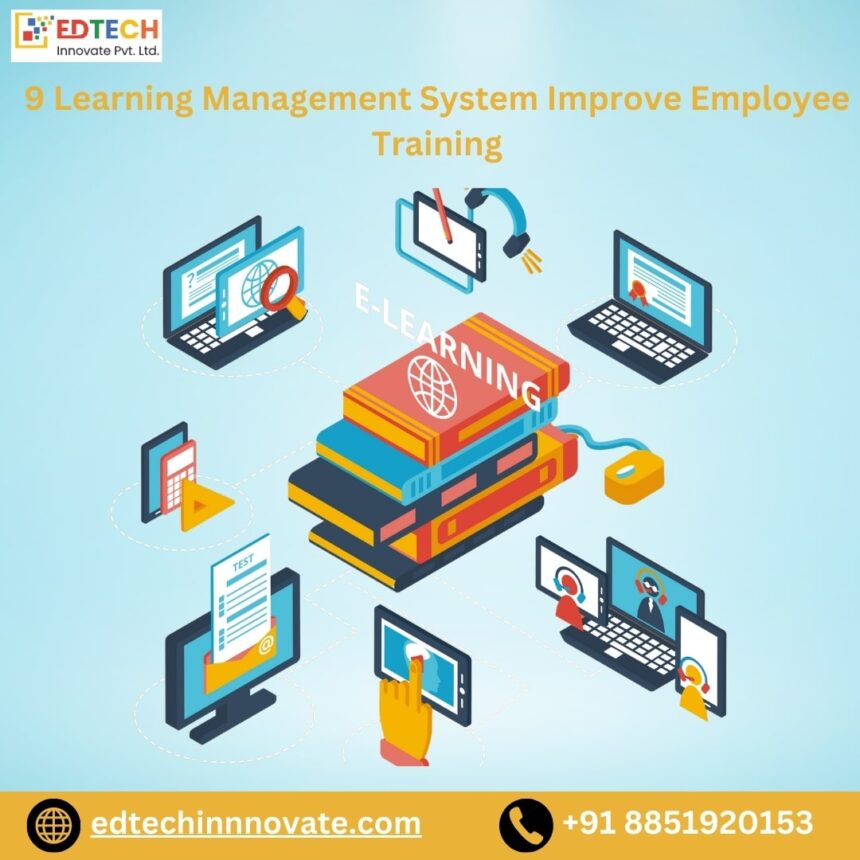Employee training is a critical component of an organization’s growth and development. With the rapid evolution of technology, organizations are increasingly adopting Learning Management Systems (LMS) to enhance the effectiveness of their training programs. An LMS is a software platform that helps manage, deliver, and track training programs in a centralized and streamlined manner. This article will explore how a Learning Management System improves employee training, focusing on its impact on engagement, efficiency, and scalability.
Key Features of a Learning Management System
Before diving into the benefits of an Learning Management System for employee training, it’s essential to understand the key features that make these systems effective:
- Course Management: Allows administrators to create, organize, and manage training materials and courses.
- Tracking and Reporting: Provides detailed analytics on employee progress, course completion, and learning outcomes.
- Mobile Accessibility: Enables learners to access training modules from anywhere, at any time.
- Certification and Assessment Tools: Helps track employee competencies and ensure they meet required standards.
- Customization: Allows for tailoring the learning content to meet specific organizational needs.
Benefits of Using a Learning Management System for Employee Training
1. Centralized Learning Hub
An LMS and AMS provides a centralized platform for all training materials, making it easier for employees to access courses, reference materials, and certifications in one place. This not only enhances organization but also reduces the time spent searching for necessary resources, enabling employees to focus more on learning. Centralized training also ensures consistency in the information delivered, which is vital for maintaining quality standards across an organization.
2. Flexible and Accessible Learning
One of the standout benefits of a Learning Management System is the flexibility it offers. Employees can access training materials from any location, at any time, through their laptops, smartphones, or tablets. This flexibility is especially important in today’s globalized workforce, where remote work and varying time zones are common. LMS platforms with mobile compatibility ensure that employees can fit training sessions into their schedules, increasing participation and engagement.
3. Improved Employee Engagement
Interactive elements like quizzes, videos, and discussion forums help boost employee engagement. A well-designed LMS often incorporates gamification features such as badges, points, and leaderboards, which make the learning process more enjoyable. These features create a competitive yet fun learning environment, encouraging employees to engage more actively in their training programs. Higher engagement leads to better knowledge retention and skill acquisition, benefiting both the employee and the organization.
4. Tracking Progress and Performance
An LMS offers powerful analytics and reporting tools that allow managers and HR professionals to track employee progress, completion rates, and test scores. These metrics are invaluable for identifying strengths and areas where additional training may be required. With real-time insights, managers can make informed decisions about an employee’s development and create personalized learning paths to fill knowledge gaps.
5. Cost-Effective Solution
Traditional training methods, such as in-person seminars and workshops, can be expensive, especially when travel, accommodation, and materials are factored in. LMS of Edtech Innovate platforms significantly reduce these costs by offering online training that can be accessed remotely. Additionally, once courses are developed, they can be reused across the organization, cutting down on recurring training expenses. The long-term savings can be substantial, making an LMS a cost-effective solution for ongoing employee development.
6. Scalability
Whether your organization is training a small team or a global workforce, an LMS provides the scalability to meet your needs. Training programs can be rolled out to employees regardless of their geographic location, ensuring everyone receives the same high-quality education. As the company grows, new hires can quickly be onboarded and trained using the same system, ensuring consistency in learning outcomes.
7. Consistency in Training Content
One of the major challenges of traditional training methods is the inconsistency in delivery. Different trainers may convey the material in varying ways, leading to unequal learning outcomes. With an LMS, the training content remains consistent, ensuring all employees receive the same information. This uniformity is particularly important for regulatory compliance and industry standards, where consistent knowledge and skills are crucial.
8. Automated Certification and Compliance
Many industries require employees to meet certain standards and certifications. An LMS technology helps automate this process by tracking which employees have completed required courses and passed necessary assessments. This ensures that employees stay compliant with industry regulations, and it reduces the administrative burden on HR teams who no longer need to track certification manually.
9. Personalized Learning Paths
An LMS allows for the creation of personalized learning paths that cater to individual employee needs. By using data analytics, organizations can tailor training programs to fit each employee’s learning style, role, and career goals. Personalized learning not only improves employee satisfaction but also ensures that training is relevant and effective.
Conclusion
A Learning Management System (LMS) significantly improves employee training by offering centralized, flexible, and scalable learning solutions. Its ability to engage employees through interactive features, track progress through detailed analytics, and provide cost-effective training options makes it an indispensable tool for modern organizations. Whether you’re looking to onboard new hires or upskill your existing workforce, an LMS can streamline the entire process, ensuring consistent and high-quality learning experiences.






